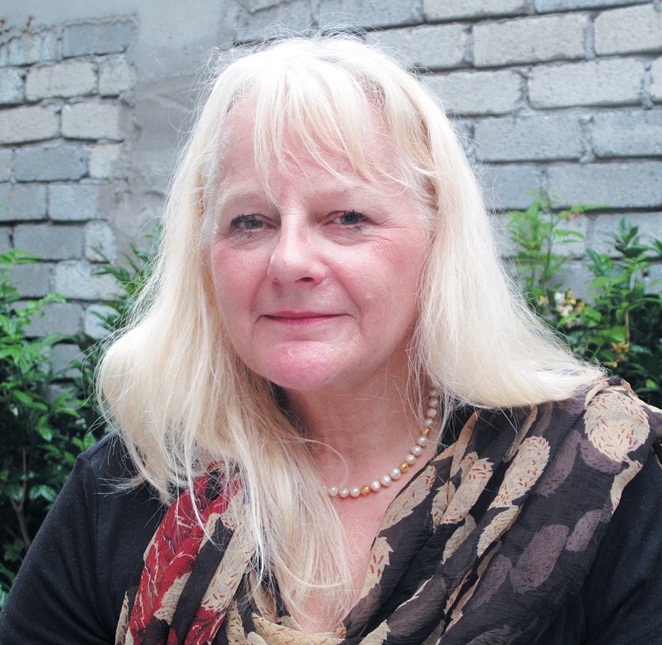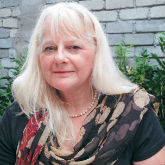
Last month I celebrated the sixth anniversary of my arrival in Penang. Actually it was a second coming as I spent most of my childhood here. There’s a great difference between then and now of course but what is also interesting is while some things have changed, much of the older Penang still exists, even if in changed form. A walk, or I should say a promenade, down Muntri Street in the outer Heritage Zone of George Town illustrates some of the old, the conserved, and the new Penang.
As you approach from the Penang Road end, you pass the place of Jimmy Choo’s apprenticeship, the Hong Kong Shoe Store at 177 Muntri Street. Despite its pride in having formerly hosted one of Penang’s most famous sons who is now a global brand, it remains, as it was then, a simple establishment selling traditional handmade shoes and nyonya beaded slippers.
Muntri Street also bears traces of less savoury activities. Some friends of mine took one of the shop houses in the row opposite to create a café and they found that the upstairs portion had been used as a brothel – three tiny rooms subdivided from the main room by only the flimsiest of partitions. Nowadays the ladies of the night and the opium dealers who frequented this part of town are no longer in evidence (at least to my untrained eye) and the street is in the process of gentrification. In fact so many structures are currently under renovation that one is apt to trip over builder’s rubble and other materials as one promenades.
There are many delightful artisan cafes, serving homemade food and excellent coffee. I particularly like Moon Tree café with its faux “paper” lanterns. Paper lantern making was one of Penang’s old trades, but in this café they have given them a new twist by decorating white plastic drums with traditional writing and images. Sadly, as the last paper lantern maker of George Town is no longer working, this may be the shape of things to come.
It’s next door to the newly opened Camera Museum which provided me with an interesting counterpoint to a recent family activity. My mother was an active photographer of Penang in the early 1960s and recently my brother and I have been sorting through her treasure trove of colour slides from that time which have lain untouched since her death a quarter of a century ago. We have found gems such as a series of pictures of the funeral of one of Penang’s most famous towkays, Heah Jee Seang, a prominent Chinese business man with extensive rubber and tin interests, who died in London in 1962 (aged 63). Upon his coffin’s return to the island, it was greeted as though he were still alive and his subsequent funeral procession was five miles in length as it wound around the streets on the way to the Chinese Cemetery. Some of the buildings in the background of my mother’s photographs, are familiar but the cars, the clothes, the look of the people, have all changed beyond recognition.
The next little corner is where the contrast between the old and the new Penang is really in evidence. In the courtyard of the Goldsmith’s and Jeweller’s Guild, set slightly back from the street, there is the traditional clan house façade which is overshadowed by a huge eye-catching mural of a small girl in a blue dress dancing on some wires. Painted by Ernst Zacharevic for the George Town 2012 Festival, this vast splash of colour and unambiguous subject matter looks slightly at odds with the delicacy of the decoration of the traditional building.
I was lucky enough to be taken by a friend for the December “birthday celebration” of the Goldsmith’s Guild Patron saint Woo Ching. On the way in the car, my friend began by telling me the legend of Woo Ching. “His sister had been chosen as a potential consort for the Emperor but there was a small blemish on her face, which would have disqualified her for the position of Empress. So her craftsperson brother made an exquisite piece of jewellery to hide this unfortunate fact. But when the sleight of hand was discovered, the Emperor was furious with Woo Ching and had him executed. But he became one of the gods of the Taoist pantheon when the Emperor regretted his precipitous action and elevated him to the status of deity.” Ever the romantic, I asked my friend what happened to the girl but was very roundly told off for my “Western perspective” and firmly told that the story wasn’t about her.
We arrived at the same time as eight roasted suckling pigs were being unloaded from a van. Security was on hand because on this day the statue of Woo Ching would wear a head dress of pure gold for a few hours until it was returned to the safety of a bank vault. The carvings underneath the altar were exquisite but one area – obviously in not such good repair – had been patched up with a cheap plastic plate. Although not aesthetic, it was a reminder of the old Penang which didn’t care about appearances, not the manicured, conserved heritage city it’s becoming. After due ceremonies of prayer and propitiation to the god, the jewellers and goldsmiths of Penang sat down to a fine lunch of roast pork.
Even in a short street in George Town, there are many diverse experiences to be enjoyed.
Source: The Expat January 2014
Read more:
- The Issue of Heritage in Penang
- The Ghost of Christmas Past for An Expat in Penang
- The Accidental Bookseller in Penang
What are your thoughts on this article? Let us know by commenting below.No registration needed.
"ExpatGo welcomes and encourages comments, input, and divergent opinions. However, we kindly request that you use suitable language in your comments, and refrain from any sort of personal attack, hate speech, or disparaging rhetoric. Comments not in line with this are subject to removal from the site. "




















